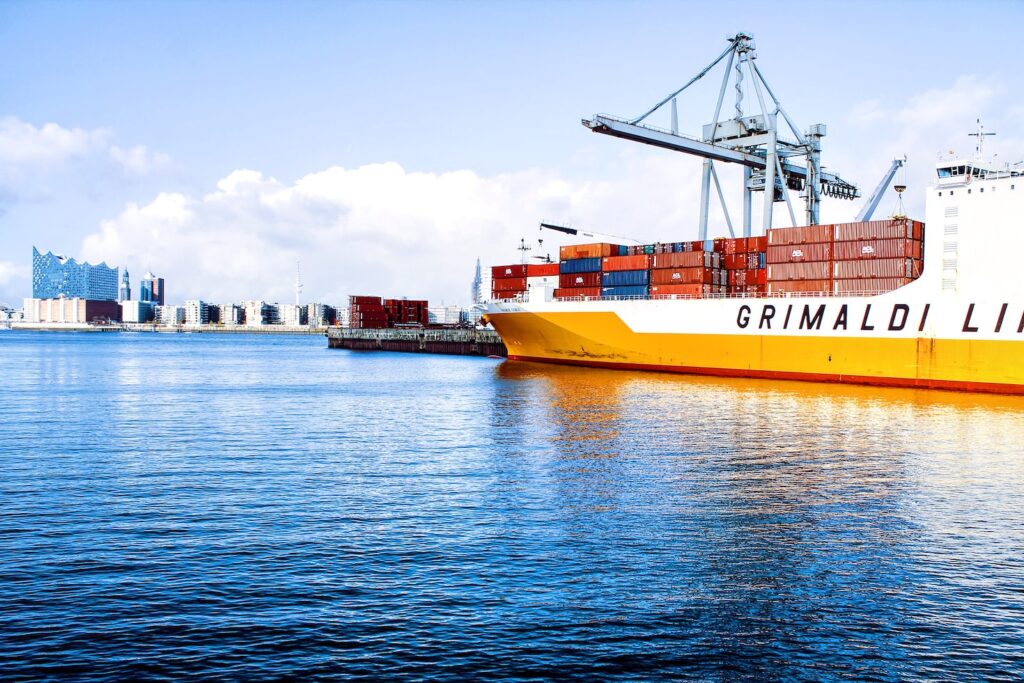Are you interested in learning about the history of shipping containers? In this article, we’ll take you on a journey exploring the evolution and impact of these metal boxes.
Beginning with trade before containers, we’ll look at how the introduction of standardized shipping containers revolutionized intermodal transport.
The process wasn’t always easy — there was a lot of resistance to container shipping, and ships had to be modified to accommodate these cargo carriers.
We’ll also discuss the cost of this success and how it has shaped global trade.
Finally, we’ll explore the modern-day phenomenon of shipping container homes. From the early days of trade to the present-day, this article will provide a comprehensive, analytical look at the history of shipping containers.
Get ready for an exciting journey!
Key Takeaways
- The history of shipping containers is one of revolution and progress. In the 1950s, the introduction of standardized containers changed the way goods were shipped. This ushered in an era of efficiency, cost-effectiveness and intermodal transport.
- The growth of container shipping has been remarkable, but this progress has come with environmental costs.
- In the 21st century, shipping containers have been repurposed into homes, providing an innovative and affordable housing solution.
- The journey of the shipping container is still ongoing. As technology advances, the industry is constantly evolving. We can see this in the ever-larger vessels that are now in use.
- Through its challenges and successes, the shipping container has had a profound impact on the world. As the industry continues to evolve, it will remain an integral part of global trade and commerce for years to come.
Trading Before Shipping Containers
Before the invention of shipping containers, the transportation of cargo was a complex and labor-intensive process.
Goods were often packed and transported in barrels, sacks, crates and other types of packages, then manually loaded and unloaded from transportation vessels like ships, railcars, and trucks.
This method, often known as break-bulk shipping, required a significant amount of labor and was prone to delays, theft, and damage to the goods.
Various goods required different packaging methods and transportation conditions, which further complicated the process.
Loading and unloading a ship could take several days or even weeks, as each individual item had to be handled separately. This also significantly increased the risk of damage to the cargo and the chance of goods being stolen.
Additionally, documentation and customs procedures were complex and time-consuming, as each type of goods required different types of paperwork and clearance.
The inefficiency of this system was a major barrier to trade, making it difficult and expensive to ship goods, particularly over long distances.
The advent of standardized shipping containers in the mid-20th century revolutionized trade, dramatically reducing costs and improving efficiency, reliability, and speed.
The Time Of Malcom McLean
The container revolution has created a new era of global trade and commerce. In the 1950s, American entrepreneur Malcolm McLean developed an innovative concept that revolutionized the shipping industry: the use of standardized containers. This allowed for the seamless, cost-effective transfer of goods between ships and trains.
The introduction of shipping containers drastically reduced the costs associated with manual loading and also decreased the risk of damage or theft during transport.
Shipping companies quickly saw the potential of the system and began to use it, realizing that it could streamline their operations and increase their profitability.
The impact of this system is evident: it has allowed for a dramatic increase in the volume and reach of global trade.
Intermodal Transport
The transformation of global trade is underway, driven by the emergence of intermodal transport. This innovative way of transporting goods between different modes of transport – such as ships, trains, and trucks – has revolutionized logistics worldwide.
At the core of this shift is the development of standardized shipping containers. The stackable and lockable design of these containers makes it easy to load and unload goods, allowing for efficient transportation.
As container transportation gained traction, the idea of intermodal transport began to take shape, allowing goods to move between transportation modes seamlessly.
This breakthrough in logistics has had multiple benefits. Not only has it increased efficiency, but cost savings and improved security during transit have also been realized.
The visionary efforts of innovators like McLean, who recognized the need for standardized containers and developed ships specifically designed to carry them, paved the way for intermodal transport.

Standardization of Containers In Global Trade
The standardization of container sizes and corner fittings has revolutionized global trade and transformed the logistics industry.
Before, containers of various sizes and corner fittings posed a challenge to efficient stacking and transportation of goods.
However, during the Vietnam War, the US government pushed for standardization, leading to the release of Malcolm McLean’s patent on shipping container corner posts.
This development enabled the creation of industry standards such as ISO 668 (terminology, dimensions, ratings) and ISO 790 (container identification).
It also introduced the standard 20-foot and 40-foot containers, with the 20-foot container known as a Twenty-foot Equivalent Unit (TEU) becoming the industry standard for referencing cargo volume.
The impact of this standardization has been immense. Shipping costs have decreased by over 90% since 1956, making it more affordable to transport goods globally.
Container traffic has also skyrocketed, with 90% of countries having container ports by 1983, compared to just 1% in 1966.
Opposition To The Spread Of Container Shipping
Container shipping has revolutionized the way goods are transported around the world, but not everyone was pleased with the changes it brought.
In port cities, dockworkers unions protested against the introduction of containerization, which eliminated many manual labor jobs.
During the early 1970s, the discontent reached its peak and resulted in a strike that disrupted the shipping industry.
The Vietnam War, as well as rising shipping costs, added fuel to the fire. Critics argued that containerization caused a decrease in employment opportunities and expensive container size requirements for intermodal shipping.
Despite the pushback, containerized shipping prevailed due to its undeniable financial savings and efficiency. It enabled global trade to become more streamlined.

Increase In Ship Size
The enormous size of ships today is remarkable. These vessels can carry up to 24,000 containers, making them like miniature cities floating on the sea.
This trend of ever-growing ships can be traced back to the 1950s when Sea-Land introduced the first shipping container.
This revolutionary invention changed the way goods were transported around the world. In 1969, Sea-Land successfully transported its first container shipment from Newark to Houston, marking a major milestone in maritime history.
Today, shipping containers are a ubiquitous part of global trade. They make it easier and faster to move goods from one place to another. As companies continue to invest in bigger and better ships, we can expect to see more new innovations that will help shape the future of shipping.

Downsides
Today’s massive ships, floating cities that can carry up to 24,000 containers, are a marvel to behold. But this incredible success has not come without a cost.
The humble shipping container has revolutionized the shipping industry, allowing for efficient loading and unloading of cargo during voyages. By standardizing the size and shape of containers, the entire shipping process has become faster and more cost-effective.
Unfortunately, as the demand for larger vessels continues to increase, so does the cost of success. The recent incident with the Ever Given in the Suez Canal is a testament to the financial implications of such disruptions.
Every minute of delay costs millions of dollars in losses, making it clear that the container business can be profitable, but any interruption in logistics can have serious consequences for global trade and supply chains.
21st Century Shipping Container Homes
In the 21st century, shipping container homes are an increasingly popular combination of sustainability and modern design.
It all began in 1956 when the first ship transported goods using steel containers. This revolutionary idea quickly changed the trucking industry, as containers could be easily loaded onto trucks, trains, and ships without manual handling.
Later, in 2006, Californian architect Peter DeMaria designed the Redondo Beach House, sparking a new trend of repurposing steel containers to create stylish and eco-friendly homes.
The idea gained traction due to the containers’ durability and affordability. This trend was further fueled by the introduction of smaller containers by the Panatlantic Steamship Company, making it easier for individuals to acquire them and turn them into unique living spaces.
Today, 21st-century shipping container homes demonstrate how creativity and sustainability can come together to create stunning architectural designs.
From sleek and modern to rustic and cozy, these homes show the vast potential of such a simple concept.

Conclusion
Tracing the journey of shipping containers has revealed a rich history of trade revolution and intermodal transport.
Standardization of containers ushered in an era of efficiency and cost-effectiveness. Although the growth of container shipping has been impressive, it has come at a price.
In the 21st century, shipping container homes are a testament to the versatility of these structures. They represent a creative solution to affordable housing across the world.
The journey of the shipping container is not complete. As technology advances, so too does the industry. It is a constant evolution that can be seen in the ever-larger vessels currently being used.
From the challenges to the successes, the history of the shipping container has been an ongoing revolution that is sure to continue to shape the world for years to come.

